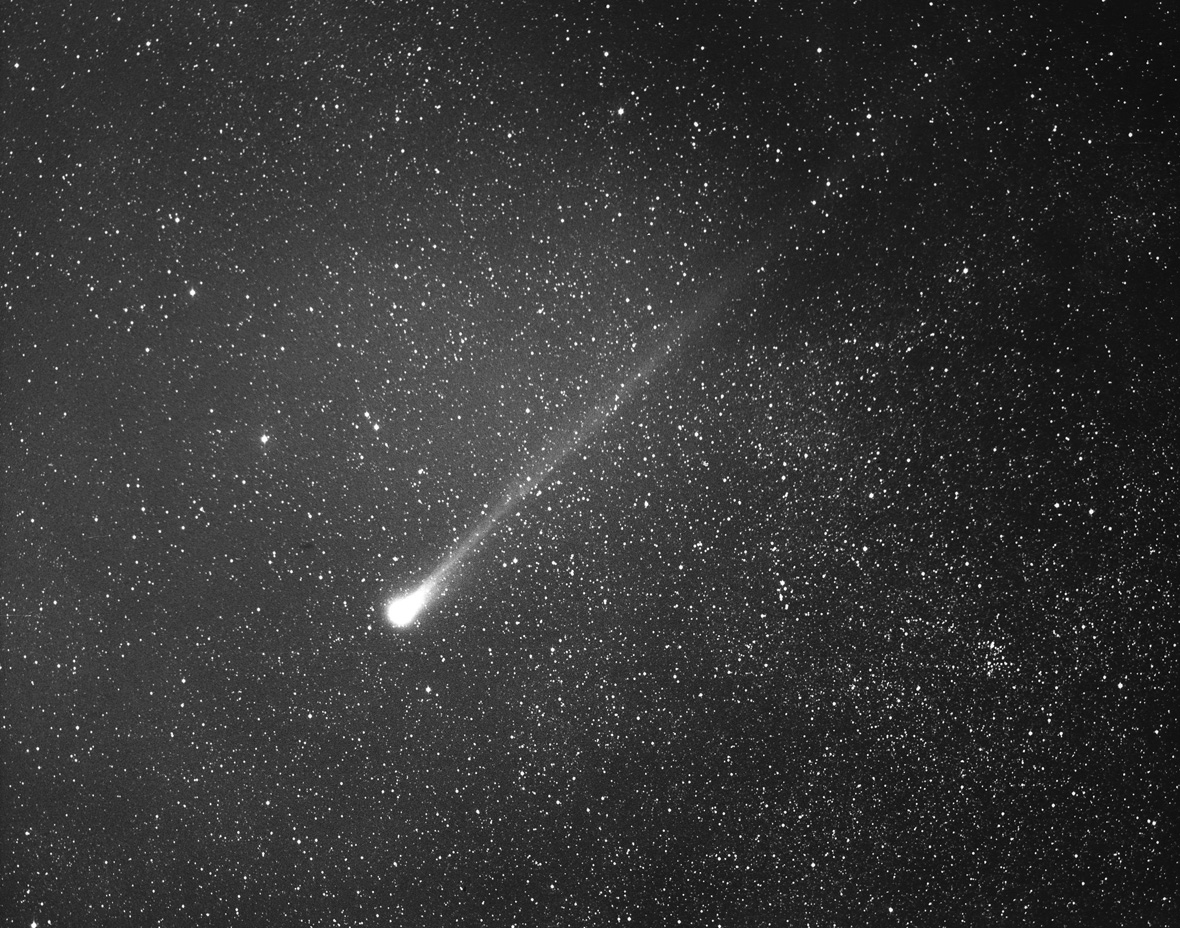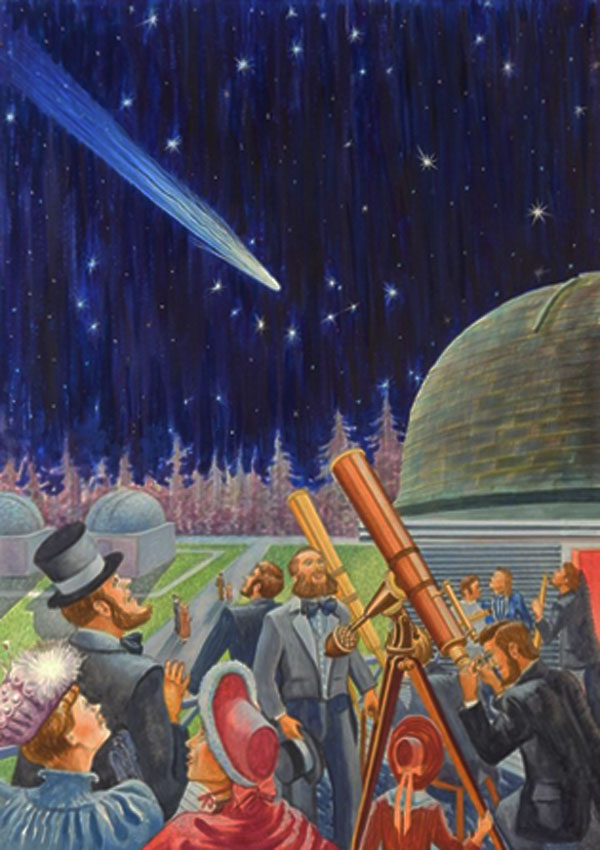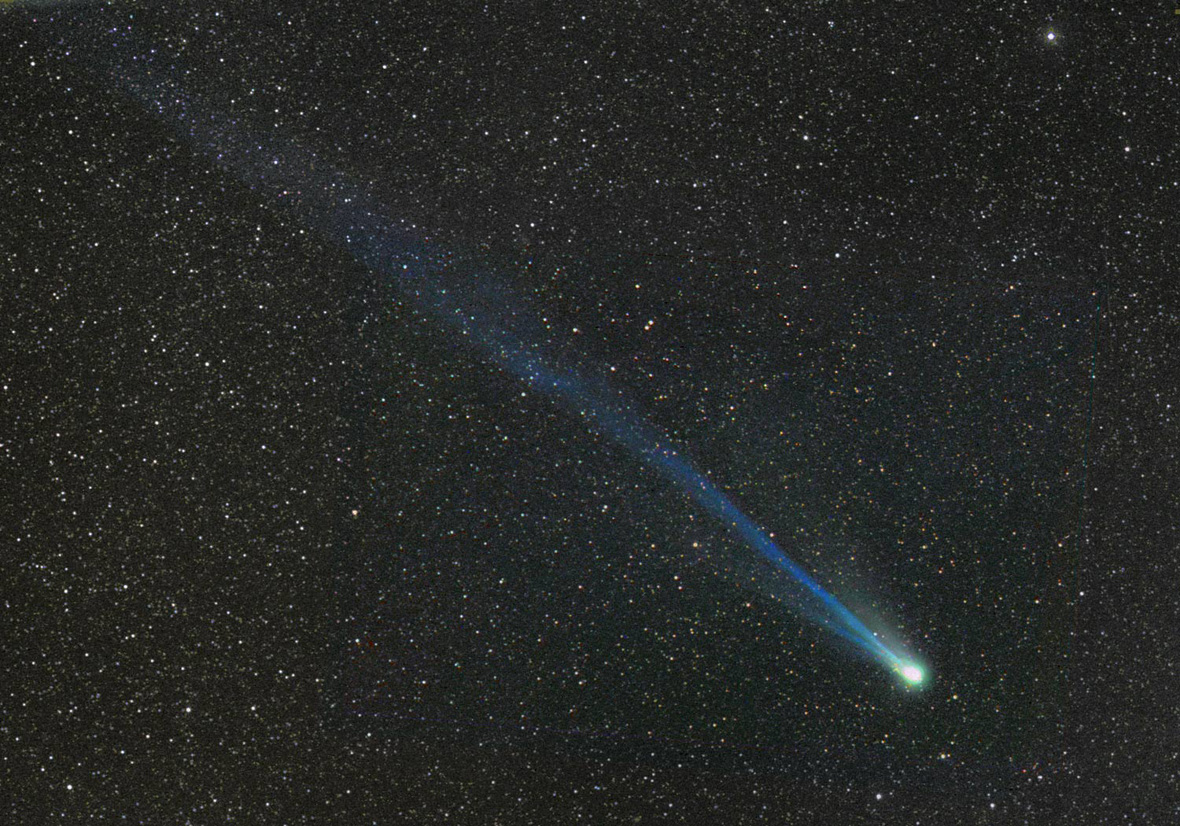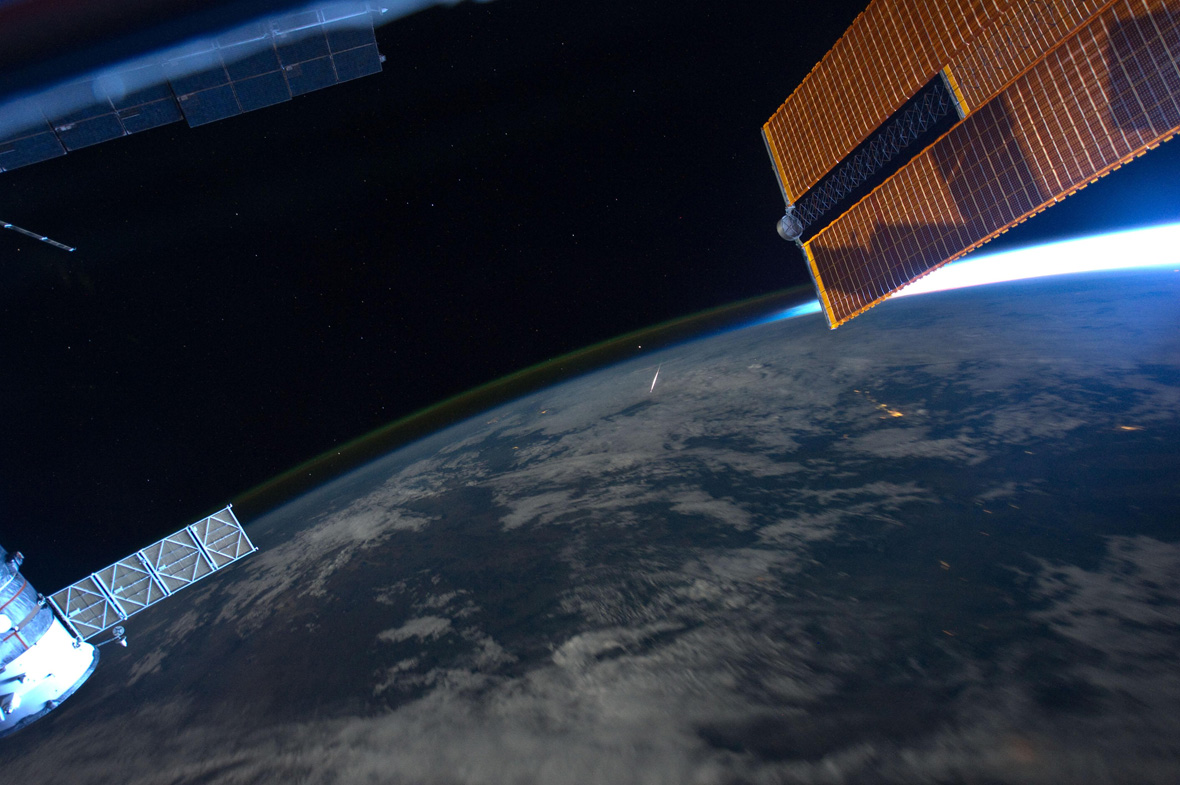
Perihelion: 1992 December 12.32, q = 0.958 AU
One of the most prolific comet discoverers of the late 19th Century was the American amateur astronomer Lewis Swift, who did most of his observing from rural New York before relocating to southern California in the early 1890s. Swift discovered his first comet, a 7th-magnitude object, on July 15, 1862, which was then independently discovered three days later by Horace Tuttle at Harvard Observatory. The comet passed through perihelion during the latter part of August, and around that time was a moderately conspicuous naked-eye object of 2nd magnitude with a bright tail 25 to 30 degrees long. The astronomers of that era were able to determine that Comet Swift-Tuttle traveled in an elliptical orbit with an approximate orbital period of 120 years, and in 1867 the Italian astronomer Giovanni Schiaparelli announced that the comet’s orbit coincided with that of the Perseid meteors, one of the strongest of the “annual” meteor showers and that peaks during the second week of August. This was the first conclusive evidence of the now well-established link between comets and meteor showers, which was discussed in a previous “Special Topics” presentation.
One orbital period after 1862 brings us to the early 1980s, and in fact detailed calculations predicted a perihelion passage sometime around mid-1981. In the early 1970s, meanwhile, Brian Marsden – later the Director of the IAU’s Minor Planet Center – took a different tack, and tried to identify previous returns of Comet Swift-Tuttle. One semi-promising candidate – which had initially been proposed by the British amateur astronomer William Lynn in 1902 – was a comet observed from China in July 1737 by the Jesuit missionary Ignatius Kegler. There were several problems with this possible identify, though, not the least of which was that it indicated an orbital period in excess of 130 years as opposed to the generally calculated period of 120 years. Nevertheless, Marsden calculated that, if the two comets were in fact identical, it would be returning to perihelion around late November 1992.

The early 1980s came and went without any sign of Comet Swift-Tuttle, and subsequently, attention turned more strongly towards Marsden’s prediction, especially after unusually strong bursts of the Perseids – to rates briefly as high as 450 meteors per hour – were observed during the 1991 and 1992 showers. Finally, on September 26, 1992, a Japanese amateur astronomer, Tsuruhiko Kiuchi, discovered a 10th-magnitude comet near the “bowl” of the Big Dipper which soon proved to be none other than the long-awaited Swift-Tuttle. This showed that Kegler’s comet from 1737 was indeed Swift-Tuttle, and Marsden’s prediction turned out to be only 17 days off.
The viewing geometry was not especially favorable in 1992, with the comet remaining relatively far from Earth: the minimum distance was 1.16 AU on November 8. It nevertheless reached a peak brightness of 5th magnitude during November and December and displayed a moderately bright tail a few degrees long during that time. After disappearing into evening twilight in late December it was picked up from the southern hemisphere as a 9th-magnitude object in late February 1993, and subsequently followed with large telescopes for the next two years as it receded from the inner solar system. There was a moderately strong display of Perseid meteors in 1993 and some enhanced activity in 1994, but ever since then, the Perseids have returned to the strength that they’ve always regularly exhibited.

Comet Swift-Tuttle’s orbit essentially intersects Earth’s orbit – which is why we have the Perseid meteors in the first place – and with a retrograde orbit (inclination 113 degrees) the relative velocity is high, approximately 55 km/second. Furthermore, it appears to have a large nucleus, perhaps up to 30 km in diameter, so the catastrophic effects should it ever strike Earth would be devastating to Earth-based life. For a while there was concern that a possibility existed for an Earth impact at the comet’s next return in 2126, however, some detective work (by Marsden and, among others, American amateur astronomer Gary Kronk) showed that two comets in old Chinese records, specifically in 69 B.C. and in A.D. 188, were in fact earlier returns of Swift-Tuttle. With this information in hand, it was now possible to establish that the “miss distance” in 2126 (on August 5) will be 0.153 AU. The comet will approach even slightly closer than that during the subsequent return in 2261 (0.147 AU, on August 24). It should become a spectacular object of magnitude 1 or 0 on both returns, but there is no danger of a collision.

A long-term study of Swift-Tuttle’s motion by British astronomer John Chambers published in 1995 indicates that there will continue to be close approaches to Earth during subsequent millennia, until on September 14, 4479, Swift-Tuttle will pass so close to Earth that it is not possible to make accurate predictions of its future motion past that point; Chambers estimates the possibility of a collision as perhaps being one in a million. Even if there is no collision, the comet will continue making occasional close approaches to Earth, and this fact, together with its large size and the large relative velocity between it and Earth – which in turn would liberate an enormous amount of kinetic energy should an impact ever take place someday – means that Comet Swift-Tuttle can probably quite accurately be described, as one of the editors at Sky & Telescope magazine once put it, as “the single most dangerous object known to humankind.”
More from Week 49:
This Week in History Special Topic Free PDF Download Glossary
Ice and Stone 2020 Home Page


